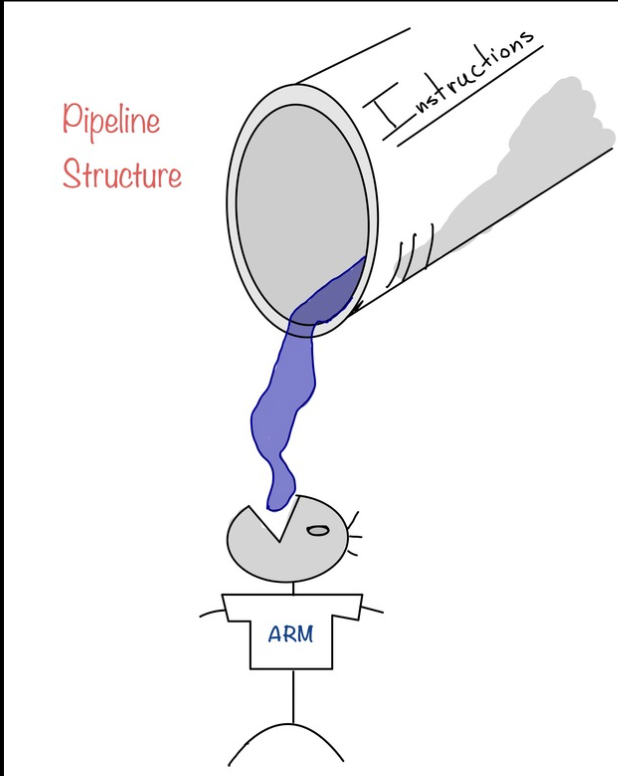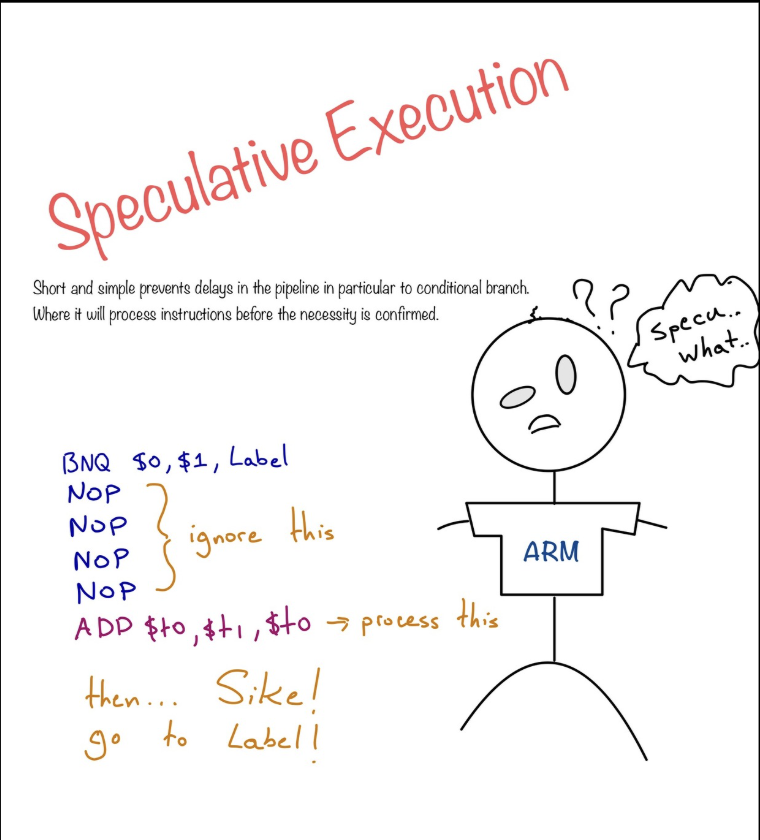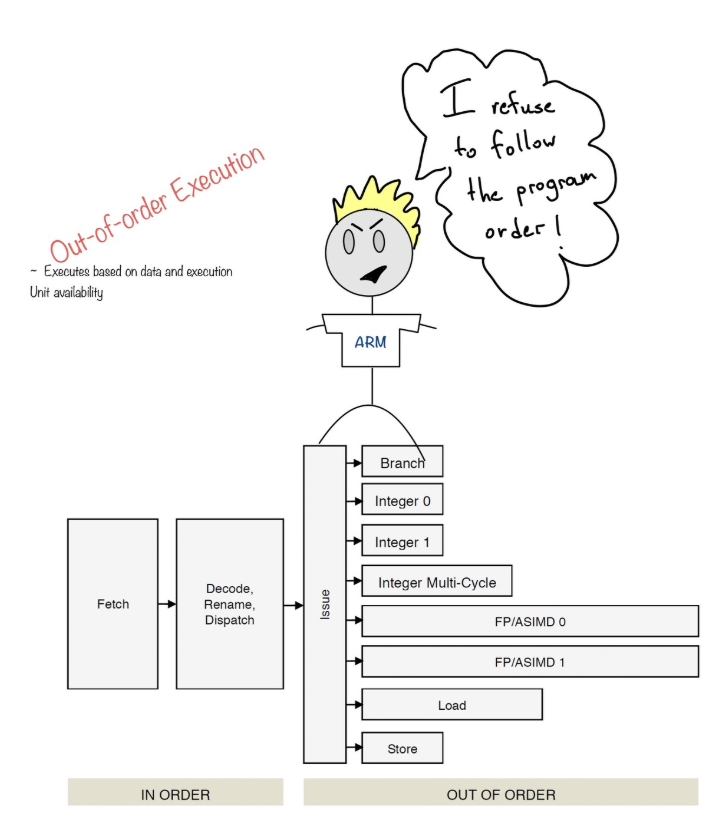Surviving My First Real CPU Design Project
17 Jan 2025If I had to tell anyone about an experience during my time in college where I felt like a Computer Engineer, this would have to be it.
Not necessarily because the project itself involved designing and a direct application of what we have learned in class…
but more so because of the issues, horrors, time spent — and the amount of time involved trying to figure out what exactly we had to do.
The Setup
Let me give a bit of background so we can relate a bit.
This project started with a 50-page PDF.
Five different files talking about instructions.
A ton of reading that felt completely alien to me.
The lab was proctored by a TA — who, mind you, was not a Computer or Electrical Engineer.
I remember asking for help and seeing my TA’s utterly confused face as they told me:
“I have no idea what to do or how to start this…”
Imagine my concern…
This was literally the final project for my Computer Architecture class — and the TA had absolutely no idea what was going on.
I tried to make sense of all the tasks being described.
SystemVerilog at this time isn’t something I can say I’m terribly comfortable with either…
Then I started realizing issues — in the logic and in the PDF.
I challenged the TA about them, and they just shrugged and told me:
“Just put the wrong answer.”
This, to me, isn’t a very engineering mentality.
So I decided to ignore that advice.
The First Red Flag
We were asked to implement a set of instructions that add…
Only — there were some weird issues.
The PDF said to add 1 + 3, which should equal 4…
Except it said:
1 + 3 = 10
Okay. If this alone doesn’t scream “serious issues in the instructions,” I don’t know what does.
There were many other errors in the instructions. So I went to the professor’s office hours to challenge the project directly.
They agreed — the material seemed wrong — and told me:
“Just focus on what you can implement.”
The Real Project Begins
Most of my classmates just made an adder.
But the original project was to make a 5-stage processor that could execute specific instructions.
So when the professor said “do what you can,” I took it as:
make it happen.
And that kicked off 3 beautiful weeks of:
- a complete lack of sleep,
- a healthy dose of stress until 4am,
- and me pulling my hair out trying to understand how to make a pipeline.
I figured jumping in from a blank slate with zero direction probably wasn’t the best idea…
So what did I do?
I drew. I read. I learned.
Because I like simple things, I chose to draw as I learned them.

What Even Is a Pipeline?
I asked myself:
“What exactly is a pipeline?”
No, not the book definition filled with jargon no one really understands.
But in human terms.
To me:
A pipeline is a sequence of steps in a guided order — going through stages, where instructions get to move forward, step by step, until they reach the end and fully execute.
Each section of the pipeline is working concurrently.

I decided to ignore addresses and logic for a moment and just focus on the architecture.
I knew there were five stages — but is that really it?
Can knowing there are five stages make me a good engineer ready to tackle this?
Absolutely not.
Feeding Instructions
I needed to understand how instructions even enter the pipeline.
In class, we learned about cache and RAM.
But here’s my issue — how do I simulate a cache in EDAPlayground?
Then I realized something:
I could create a fixed order of instructions in a testbench.
Basically, the testbench could act as my main memory.
Awesome — one problem solved.
Now… how do I do that?
What Is an Instruction?
Instructions have different parts.
Each instruction has a different format.
Okay, this is not as simple as I thought.
I picked three basic ones:
ADDBRANCHLOAD
Each one has a unique layout.
First thing I tackled was the opcode — the value that tells the pipeline what the instruction is trying to do.
Is it an add?
A load?
A jump?
For ADD, which is a register-to-register operation, I needed to reserve bits for the opcode, Register1, Register2 — so I ended up using a 16-bit format.
I followed the same process for the other instructions.
Funny thing: I ended up building my testbench before the pipeline.
Which reminded me of what one of my favorite professors once said:
“Start with testing!”
Sounds weird — writing tests for a program you haven’t even made.
But honestly, it’s a super helpful mindset.
Tests are the cornerstones.
As programmers, we know what outputs we expect.
If we test for those ideas early, we can align the rest of the code to them.

Hazards, Bubbles, and NOPs
After I finalized the formats, I realized something else…
A proper pipeline needs to handle hazards — like read-after-write.
It also needs to handle branches.
In class, the easy way to deal with this was to add bubbles, or NOPs.
That gives time for operations to complete before a new one interferes.
ADD is one of those risky instructions. So is BRANCH.
If a branch instruction is mid-pipeline, and something else is queued right behind it — you could jump somewhere else and still execute the following instruction.
That’s bad.
So I knew I had to catch branch instructions early — at fetch.

Since I built branch handling early, expanding to things like CBZ or BL was relatively smooth.
Okay… I say easy — but let’s be honest.
It wasn’t.
I had never used struct or package in SystemVerilog.
So I did what any resourceful engineering student does…
TO YOUTUBE ACADEMY!!!!
I went through so many videos. But I had a system — something a classmate once told me:
“The best videos are the ones with super thick accents you can’t understand at first.”
Turns out that was true. lol.
After enough time, the accents became trivial.

What I Couldn’t Finish
One of my goals was to implement out-of-order execution.
I couldn’t finish that part — ran out of time. But I still want to add it in the future.
I got the concepts, but building them in practice was another beast entirely.
Still, despite all the chaos, I made something.
It wasn’t perfect. It wasn’t revolutionary.
But it was my own, hard-earned work.
The Ending…
Here’s the kicker.
I turned in my project… and the TA marked me wrong.
Why?
Because I didn’t submit the wrong answer — which was what he had on the answer sheet.
I laughed.
This is how letter-grade education works sometimes.
I challenged the grade. Went to the professor.
Showed them my work. Explained everything I did.
They were shocked.
Turns out, the TA had never even taken the class.
He was randomly assigned by the school — not his fault, really.
I got full marks in the end.
But I did feel bad for the others…
They got marked down for submitting the wrong answer. facepalm
Oops. Sorry…
The good news?
The course got revised the next semester.
And I walked away with more knowledge and experience than I ever expected.